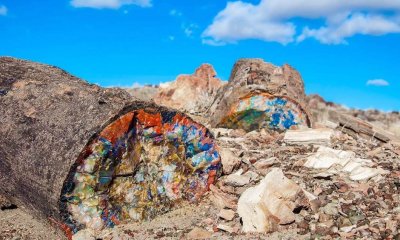Texas
7 of the Most Dangerous Animals Found in Texas
To many who have never visited, The Lonestar State might be synonymous with a sweltering wasteland. You might be surprised to find that Texas has a lot to offer. Bustling urban cities like Houston and Dallas offer tons to explore, and beautiful natural landscapes like some of their prized swimming holes are unrivaled. People in Texas definitely have a reputation for being tough. Maybe that’s because of the dangerous animals that they have to avoid to enjoy the other joys Texas has to offer. You’ll probably be expecting some of the dangerous animals in Texas, but others might surprise you!
1. Snakes
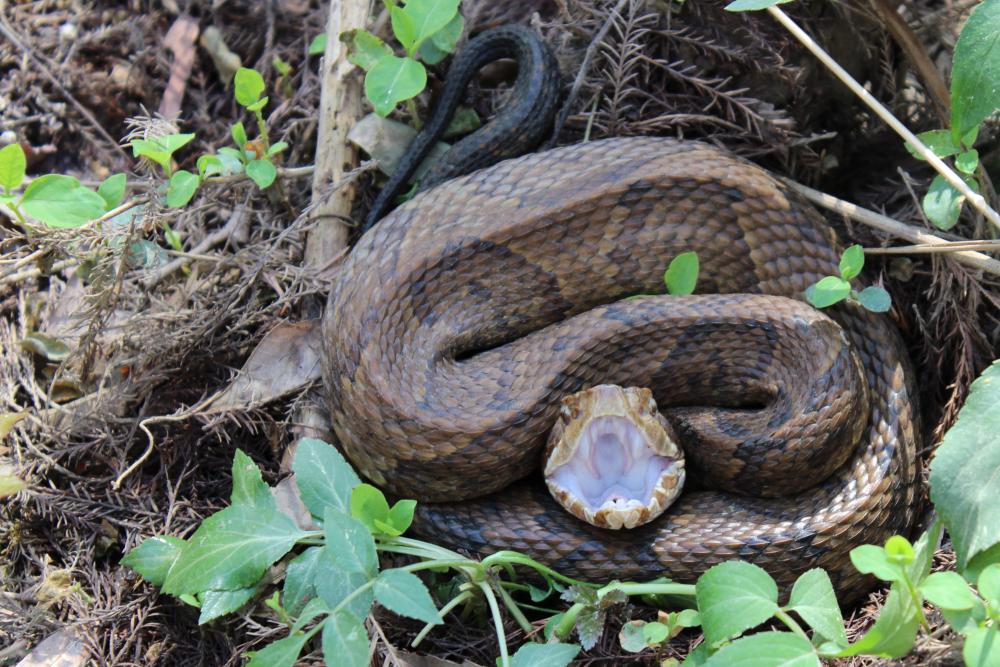
There is no shortage of dangerous snake varieties in Texas. The scariest ones are the venomous types: Cottonmouths (also known as water moccasins), coral snakes, rattlesnakes, and copperheads. You’ve likely heard of all these infamous predators, and for good reason. Anyone of them can be life-threatening.
Coral snakes are the brightly colored Texas native. Their venom is extremely potent, second only to the black mamba, but luckily, their fangs aren’t large enough to deliver it in huge amounts.
Rattlesnakes, copperheads, and cottonmouths all belong to the category of snakes known as pit vipers, because of the pits located near their nostrils that help them locate their warm-blooded prey. Copperheads use their camouflage coloring to lay low, and cottonmouths always stay near water. Of course, everyone is familiar with the telltale sound that rattlesnakes use to warn us if we’ve accidentally wandered into their path.
All of these snakes types can be aggressive, and will absolutely bite or strike if they feel threatened. Seek medical attention immediately, so that professionals can combat the effects of the venom, which can cause serious pain, as well as side effects like dizziness, shortness of breath, and ultimately death.
2. Fire Ants
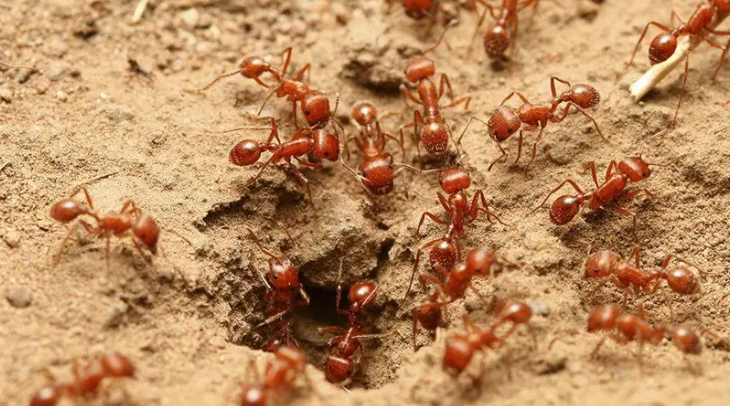
It’s incredibly scary that something so small, that you would likely not even notice approaching you, can pack such a punch. Good news and bad news: the four species of fire ants that reside in Texas are typically found in colonies that are hard to miss. The bad news is, the fire ant is one of the most dangerous animals in Texas.
To disturb a colony of fire ants would be a huge mistake. Females and males alike are known to attack aggressively and rapidly. Do you want even worse news? They’re capable of both biting and stinging, repeatedly, which they will continue to do even when their venom is depleted. If you are unfortunate enough to get ambushed by a colony, you can expect some serious burning and stinging. In the days following, white pustules will form as well. Some people who are especially sensitive to the venom can have life-threatening reactions.
Another horrifying instance in which you could encounter fire ants is when high waters rise, especially after hurricanes. These intelligent ants have adapted to form flotation devices out of their own bodies when dry land isn’t available. These horrifying monstrosities can be made up of hundreds of thousands of ants and are capable of floating for weeks. You shouldn’t have any problem seeing that nightmare coming, so we suggest giving it a wide berth.
3. Cougars
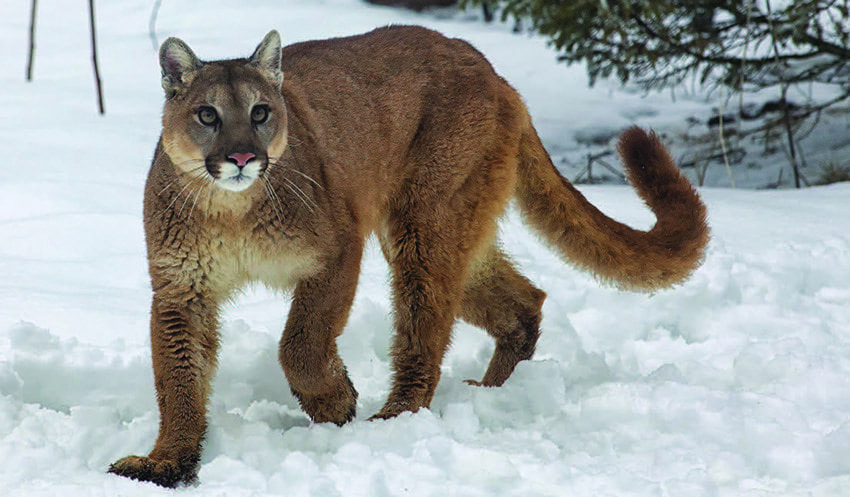
These big cats go by many different names. Often referred to as cougars, mountain lions, pumas, or even panthers, however, you call it, these cats can be lethal predators and easily one of the most dangerous animals in Texas.
They often grow as large as 8 1/2 feet long and can weigh up to 150 pounds. Historically, they’ve been spotted in every single county in Texas. Typically, cougars are most active during morning, evening, and into the night, versus lounging around through the (often stifling) heat of midday. “Home” to a cougar can encompass as much as 200 square miles, and they love snacking on everything from deer, antelope, big horned sheep, raccoons, coyotes, possums, rabbits, and even porcupines.
Attacks on humans are fairly rare, but mountain lions tend to attack from above and aim for the neck. If you’re lucky enough to actually see a cougar eyeing you up for lunch before they pounce, then your best bet is actually to yell, throw things, and make yourself as big and intimidating as possible. In fact, experts claim that even children have discouraged cougars from attacking by doing this. So its totally no big deal, right?
4. Spiders
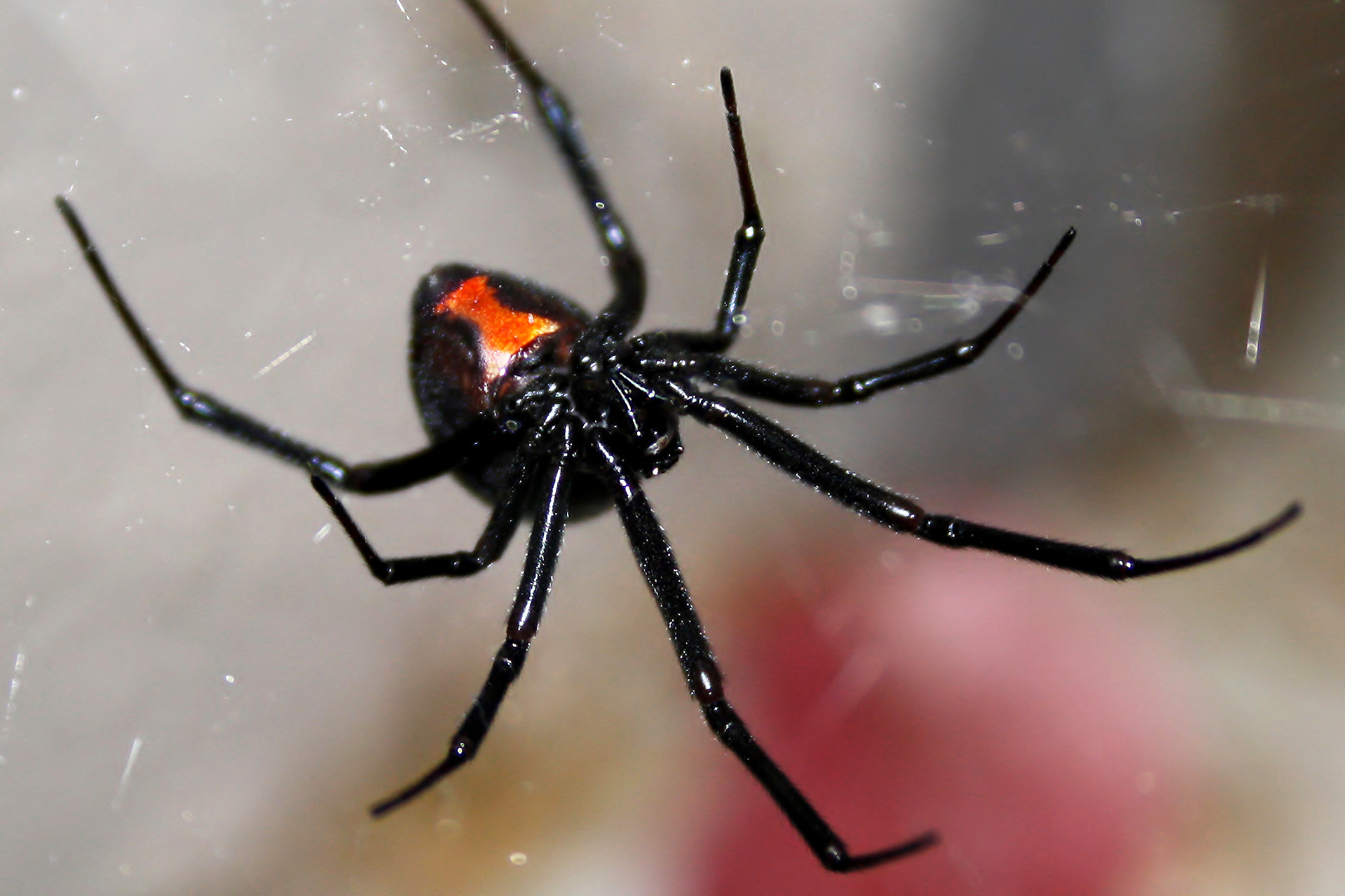
No doubt, there are tons of spiders in Texas, but there are two venomous varieties that it’s most important to watch out for: the black widow and the brown recluse.
Black widow spiders are easy to spot because of the red-colored hourglass marking found on their underside. If bitten, you’ll be injected with a neurotoxin 15 times more powerful than a rattlesnake. Luckily, less venom is transferred. But there can still be serious side effects like nausea, sweating, abdominal cramping, and convulsions.
Brown recluse spiders can be identified by a brown or black fiddle-shaped marking. The venom from this spider contains necrotizing enzymes. In simpler terms. that means flesh-eating. So along with the chills fever, etc, your flesh around the bite site will literally begin to die.
The good news is that neither of these spiders is typically considered aggressive. So, simply steer clear of small, undisturbed places like cracks in woodpiles, or piles of old clothes, and you should be safe.
5. Scorpions
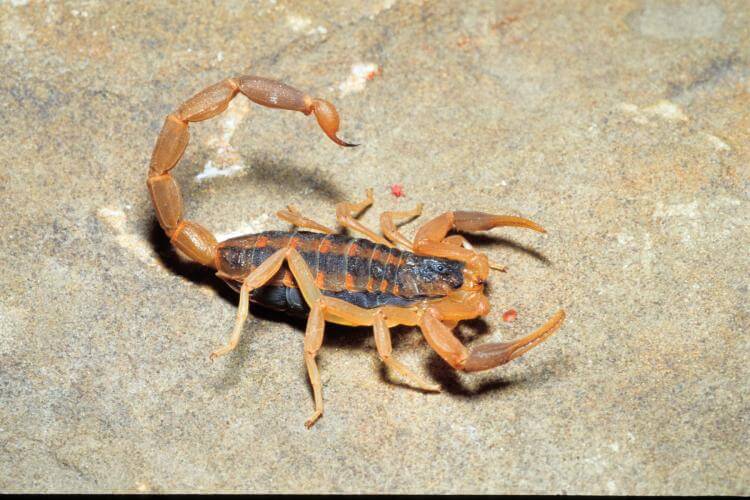
The most common species of scorpion in Texas is the striped bark scorpion. Typically, they’re pale yellow, and they don’t get larger than about 3 inches. They love small spaces, and if the outside temperature varies beyond their comfort zone — too hot or too cold — they’re very likely to look for a tiny opening into your home where things are more temperate.
They aren’t necessarily aggressive despite their very scary appearance, but thousands of people a year get stung, whether they’re in their own home, or outside walking barefoot. A sting from this scorpion isn’t likely to be life-threatening, but it will cause severe pain, notable swelling, and likely other symptoms like nausea and shortness of breath.
6. Armadillos
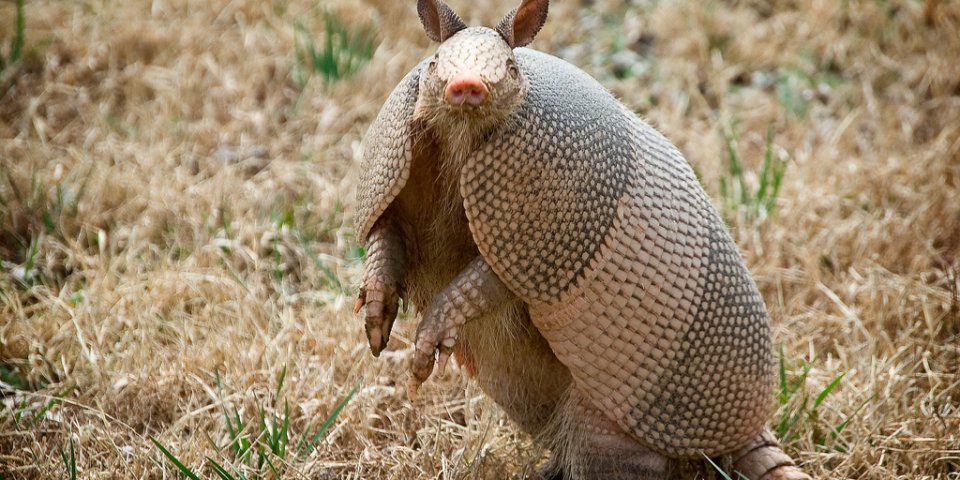
Armadillos are one of Texas’s most iconic animals. Actually, in 1995, the state named the nine-banded armadillo their official small mammal. These dog-sized creatures are hard to miss with their unique armored bodies that protect them from predators. Along with the shell, comes powerful claws that armadillos use for creating their burrow, tearing up gardens, and digging up food like insects and larvae.
There are tons of quirky facts about armadillos that Texans love to share. Examples? During the Spring, mama armadillos give birth to four identical quadruplet armadillo babies. Another interesting fact is that when bodies of water separate armadillos from where they need to be, armadillos are capable of either simply walking across the bottom of the body of water, or inflating themselves to twice their size so that they’re able to float/swim across.
The good news is that, typically, its fairly easy to sneak up on one of these guys, which usually causes them to jump straight in the air in an attempt to scare any would-be attacker away. The bad news is, if you do anger one, their claws are sharp. And they’re one of the only known animals that is capable of carrying and transmitting leprosy. Yikes!
7. Raccoons
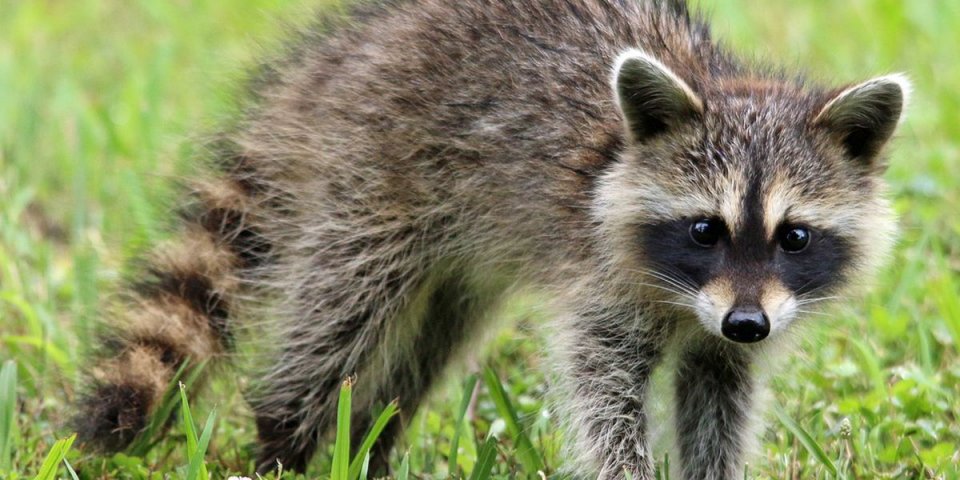
You might think that these teddybear-esque creatures are too cute to ever be dangerous, but you’d be wrong. While their exaggerated eye makeup and bushy tails are undeniably cute, raccoons can actually be quite aggressive.
Its common knowledge that raccoons love digging through your trash for food treasure. Try running them off though, and you might actually be putting yourself in danger. Mamma raccoons are very protective as well, so accidentally separating a family could turn you into a target. Raccoons carry several bacteria and diseases that can be transmitted to humans or pets. These include rabies, salmonella, and roundworm. So while these cuties might look like they’re calling for you to cuddle them, don’t be fooled!
So, are you as tough as a Texan? Could you handle an encounter with any one of these dangerous animals in Texas?
















